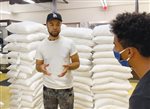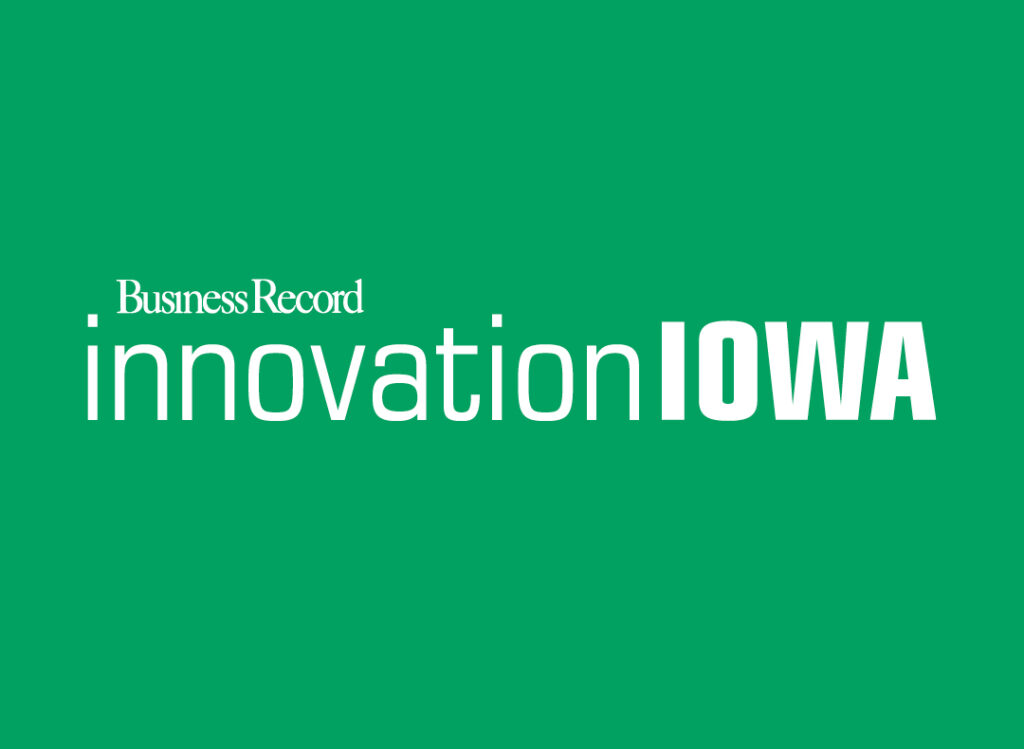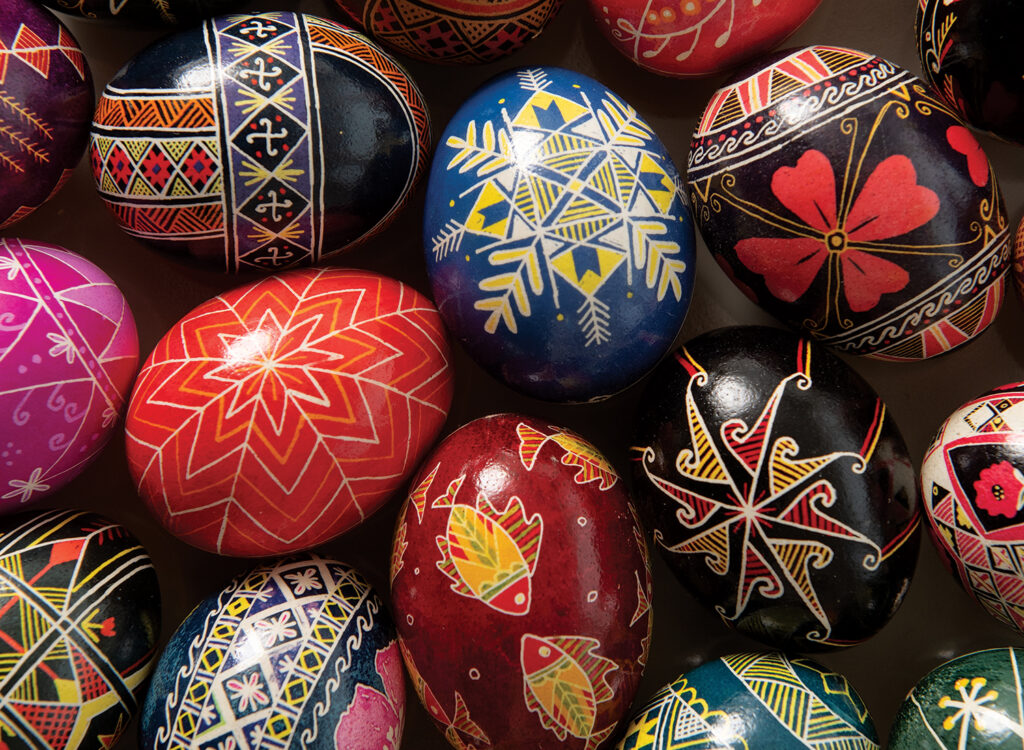Using art to bring social issues out of the shadows

MICHAEL CRUMB Oct 29, 2020 | 3:01 pm
6 min read time
1,393 wordsArts and Culture, Business Record InsiderResidents of Des Moines can now see a public art display that is designed to tackle the issue of youth homelessness head-on.
The project, called the Dream Cube, represents the importance of having a place to lay your head at night, said Kub Stevens, the artist behind the project.
Pillows “stand as a physical representation of what’s needed in order to dream,” Stevens said. “You don’t have dreams if you don’t have a safe place to sleep. You can’t dream of a better future if you don’t have a safe today, a safe place to call your own right now.”
The project, an 8-foot-tall and 7-foot-wide cube of more than 200 white bed pillows mounted on aluminum poles, is part of an art and social impact project funded through Bravo of Greater Des Moines and the Mid-Iowa Health Foundation, with additional support from the Iowa Arts Council, Capital Crossroads and the Community Foundation of Greater Des Moines. The pillows, Stevens said, were purchased from various Walmart stores around Central Iowa.
The project, along with an artist-in-residency project that launched this month, is designed to use art to raise awareness and create action to social issues in the community.
Bravo, best known for its grant-making mission to support arts and culture, also budgets $100,000 for what is known as “Lead Beyond Grantmaking.” With that funding, Bravo helps support projects that cannot be accomplished with a grant to a single organization, said Sally Dix, Bravo’s executive director.
The nonprofit organization is funded almost entirely by the local hotel/motel tax, but that revenue has significantly decreased as travel and tourism have drastically fallen off because of the coronavirus pandemic.
Dix said that while Bravo’s grantmaking mission, referred to as community investment, could see a nearly 50% decrease in 2021 (just over $4.5 million was granted in 2020), its board of directors has committed to maintaining the $100,000 for community impact projects, such as the pillow project and the artist-in-residency initiative.
“It has tremendous added value,” she said of the Lead Beyond Grantmaking fund. “It’s still relatively small. We’re not losing sight of our primary function, but it’s incredibly important that we continue to make the case that arts and culture should be at every table for every discussion and can move every objective forward faster, and if we don’t do this work, then this doesn’t happen and that’s not good for the sector or region, either.”
The Dream Cube project, which received $10,000 from the community impact fund, is designed to demonstrate how arts and social issues intersect.
“It’s a really exciting interactive public arts project … to demonstrate that art amplifies the message of how critical an issue this is to our community,” Dix said.
The use of pillows is a metaphor for “If you don’t have a safe place to dream, how can you realize your full potential?” she said.
Suzanne Mineck, president of Mid-Iowa Health Foundation, said the idea for the pillow project is an extension of work already being done to eliminate homelessness in the community.
She said she and Dix were talking one day about the role art can plan in “tackling some of our hardest community issues.”
“Art has a way … of helping us see something or visually experience something that otherwise many of us would never know or be able to get intimate with enough to respond to with action,” Mineck said. “So we talked about a range of issues where art could help elevate that awareness and experience, and our youth homeless work seemed to rise to the top of being at the tipping point for the broader community to become more engaged.”
Mineck said a pretty rigorous request-for-proposal process was undertaken to find the right artist, and Stevens, 23, of Ames, was chosen.
While the project required some financial investment, it also required thought about how collaboration can result in change, she said.
“It required us pressing a pause button to know how else can we work together to bring necessary change to our community, and I think that’s one of the most critical parts of this partnership,” Mineck said.
Part of that collaboration is Stevens’ work with members of the Polk County Youth Action Council to help create the vision for the Dream Cube.
One of those young people is DaVossi Wisdom, 21, who has been with the action council since it was formed in 2017.
He’s been spending time with Stevens and other council members at the Iowa Homeless Youth Centers in downtown Des Moines, brainstorming and building a prototype of the Dream Cube, which will be assembled each day on-site when it’s unveiled.
The Dream Cube went on display on Thursday, Oct. 29, at the Wellmark YMCA, 501 Grand Ave. It was expected to be displayed again on Friday, Oct. 30, at the DART Central Station, 620 Cherry St.; and at Cowles Commons, 221 Walnut St., on Saturday, Oct. 31. It will be on display from 8 a.m. to 8 p.m. each day.
Wisdom said the Dream Cube is personal for him, having been homeless for a while after he turned 18.
Although he spent some nights on the streets, much of his time being homeless was spent in houses where he was with “negative people, negative things,” he said.
Wisdom, who today is living in a safe place and has a 1-year-old son, said he hopes the project raises awareness and action that will help keep his son from having to experience what he went through being homeless.
“I don’t want anyone to have to sleep on the streets alone or with guns under their pillows,” Wisdom said. “That’s not a life. If I can stop homelessness or have an impact on it, I’m good. If I can help save a handful of people, I’m good.”
Group Creative Services, which works to use art to activate larger community goals and engagement, participated in the process to select Stevens and in the coordination of the Dream Cube project. It also is helping to facilitate the artist-in-residency project, which received $15,000 from Bravo with support from Invest DSM.
The artist, Eleanor Kahn, is embedded with a team at Invest DSM and will visit old neighborhood business districts that need increased energy and vitality, said Teva Dawson, director at Group Creative Services.
“She’s getting a sense of what they are and meeting with people who are current owners, neighborhood leaders or stakeholders,” Dawson said.
She said that Kahn, an Iowa State University graduate who now lives in Chicago, will work with stakeholders over the next six months to determine “what their hopes and dreams are and what the potential is.”
The goal of the project is to help organizations approach their goals with more creativity and innovation, Dawson said.
“She’s there to provide a spark of creativity toward the revitalization of those business districts,” she said.
Dawson’s partner at Group Creative Services, Mat Greiner, said Kahn, who has a background in scenic design for the theater, will help expose the community to new ideas to enhance and amplify what’s already happening in those neighborhoods.
“It is ultimately up to her creative insight to work with what she understands from the naturally occurring energies in the space that she works in that will determine what she actually does,” he said.
Dawson said she would anticipate a vision being developed by the end of this year with implementation coming next spring or summer.
Projects like the artist-in-residency and Dream Cube are examples of the important role public art can play in the community, she said.
“Art is there for more than adornment,” Dawson said. “Art can and should be used to address issues that are critical to our community, such as youth homelessness or revitalizing neighborhood business districts.”
Stevens, the artist on the Dream Cube project and a student at Iowa State University, said he hopes the project will bring people together to facilitate change that is needed to reduce homelessness.
“I saw this as an opportunity to create a place where those who have been affected by homelessness and those who have not been affected by homelessness can meet and have an exchange and a dialogue, and that we can grow stronger as a community as a result of that,” he said. “I’m excited to see what that synthesis of different people will look like.”











